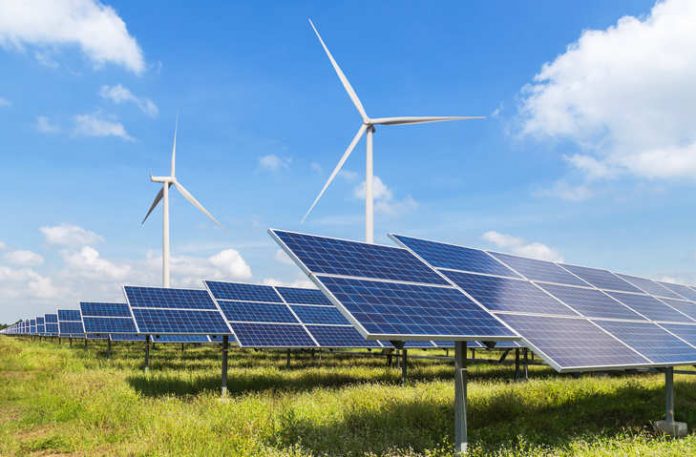A review of FERC data by the SUN DAY Campaign has found that solar, wind and hydropower provided 85.7% of new U.S. electrical generating capacity added during the first two months of 2020 — completely overwhelming that provided by natural gas.
FERC’s latest monthly “Energy Infrastructure Update” report (with data through February 29, 2020) also reveals that wind and solar are on track to each provide more new generating capacity than natural gasover the next three years. Moreover, the mix of all renewables (biomass, geothermal, hydropower, solar, wind) will add nearly 51 GW of new generating capacity to the nation’s total by February 2023 while that of natural gas, coal, oil and nuclear power combined will actually decrease by almost 2 GW.
This is, of course, estimated without taking into account coronavirus delays and outcomes.
During the first two months of this year, 38 new units of solar totaling 987 MW were added to the United States’ total energy generating capacity accompanied by four units of wind (303 MW) and three units of hydropower (13 MW). By comparison, FERC reported only 218 MW (or seven units) of natural gas. There were no new capacity additions by coal, oil, nuclear power, biomass or geothermal energy.
Renewable energy sources now account for 22.60% of the nation’s total available installed generating capacity and continue to expand their lead over coal (20.62%). The generating capacity of just wind and utility-scale solar is now at 12.58% of the nation’s total (not including residential solar.
In addition, FERC data suggest that renewables’ share of generating capacity should increase significantly over the next three years. “High probability” generation capacity additions for wind, minus anticipated retirements, reflect a projected net increase of 26,167 MW while solar is foreseen growing by 22,593 MW. By comparison, net growth for natural gas will be only 21,822 MW.
While hydropower, geothermal and biomass are all projected to experience net growth (1,903 MW, 178 MW, and 92 MW respectively), the generating capacity of coal, oil, and nuclear power are all projected to decline — by 19,082 MW, 3,060 MW, and 1,369 MW respectively. In fact, FERC reports no new coal capacity in the pipeline over the next three years and just 2 MW of new oil-based capacity.
Thus, if these numbers hold, over the next three years, renewable energy generating capacity should increase by at least 50,933 MW while that of fossil fuels and nuclear power should drop by 1,689 MW. And by spring 2023, renewable sources could account for more than a quarter of the nation’s total available installed generating capacity.
In fact, renewables’ share could be even higher. Over the past year, FERC has been regularly increasing its renewable energy projections in its monthly “Infrastructure” reports. For example, two months earlier, FERC forecast net growth over the next three years of 48,254 MW for renewable energy sources — 2,679 MW less than its latest data.
“The impacts of the global coronavirus crisis and the wild gyrations in international oil prices have yet to be reflected in FERC’s data,” noted Ken Bossong, Executive Director of the SUN DAY Campaign. “However, renewables – especially wind and solar – still seem poised to continue their rapid growth toward eventual market dominance.”






